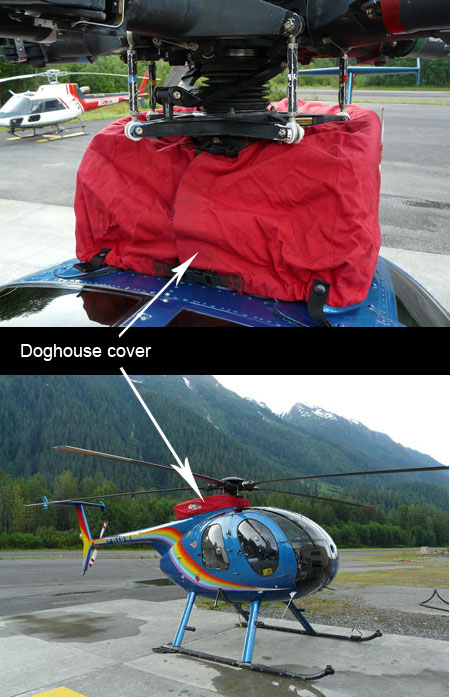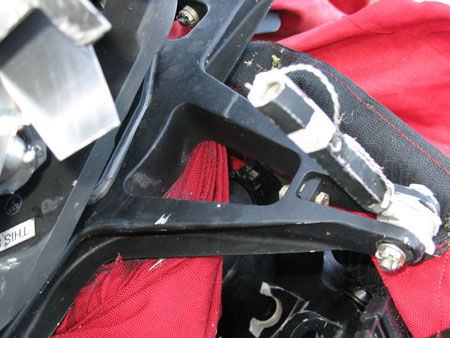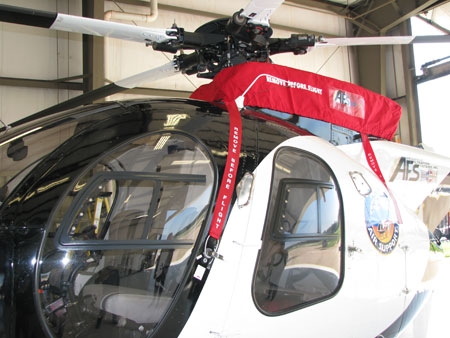Loss of Control - Collision with Terrain
Prism Helicopters
MD Helicopters 369D (Hughes 500), C-GZIO
Alice Arm, British Columbia
The Transportation Safety Board of Canada (TSB) investigated this occurrence for the purpose of advancing transportation safety. It is not the function of the Board to assign fault or determine civil or criminal liability. This report is not created for use in the context of legal, disciplinary or other proceedings. See Ownership and use of content. Masculine pronouns and position titles may be used to signify all genders to comply with the Canadian Transportation Accident Investigation and Safety Board Act (S.C. 1989, c. 3).
Summary
The MD Helicopter 369D (serial number 500715D, registration C-GZIO), operated by Prism Helicopters, was involved in support operations for mining exploration near Alice Arm, British Columbia. The helicopter took off at about 0709 Pacific daylight time for the first flight of the day to a drill site up the Kitsault River valley with one pilot and three passengers on board. As the helicopter departed in a shallow left-climbing turn, it emitted an unusual sound. It reached about 150 feet above ground level, then suddenly banked 90° to the right, and fell to the ground.
It broke up on impact with a fallen tree and the main section, with the occupants, fell into the Kitsault River and remained mostly submerged just below the surface. All the occupants suffered fatal injuries on impact. The emergency locator transmitter operated until it was turned off by first responders. There was a small post-crash fire on the river bank that extinguished on its own.
Other Factual Information
The pilot had 38 years of flying experience and had accumulated over 11 000 hours of flight time, with a substantial amount in similar operations. Records indicate that he was certified and qualified for the flight in accordance with existing regulations. The pilot arrived in Alice Arm, British Columbia, for this tour of duty six days prior to the accident. The work schedule was relatively light. Prior to this tour of duty, the pilot was off 10 days, was well within the limits of duty time, and he had a quiet, restful evening before the accident flight.
Records indicate that the helicopter was certified, equipped, and maintained in accordance with existing regulations and approved procedures. There was an apprentice aircraft maintenance engineer on-site to help with elementary tasks on the helicopter. He would normally look over the helicopter at the end of the day and secure it for the night. This included installing a synthetic heavy material cover (doghouse cover) over the engine intake and around the main rotor control system (see Photo 1) and tying the main rotor down.
He would normally get up in the morning to remove the cover and untie the rotor, among other things. A couple of days before the accident, the pilot suggested that the apprentice need not get up early and that he would prepare the helicopter for the day's flying. On the last two nights, the apprentice did not tie the rotor down but he installed the cover.
The cover does not have any straps or physical barriers that fall at or below human eye level. Once the pilot gets into the helicopter, there are no visual cues of the cover's installation.
On the morning of the accident, the pilot got up at the usual time, but stayed at the lodge a little longer and arrived at the helipad later than normal. Two of his passengers arrived before him. The pilot was loading their equipment when the third passenger arrived at the helipad. They loaded some more equipment, embarked the helicopter, and departed immediately after. One piece of equipment was left behind.
The weather was clear with little or no wind.
Examination of the helicopter wreckage at the accident site revealed the cover tightly wrapped around the main rotor control system, around the swashplate (see Photo 2). Nearly all the control linkages (pitch change rods) were broken and the damage was not consistent with that normally found from crash impact forces. Rotor blade damage was consistent with low rpm at impact. Tree damage/scars at the accident site were consistent with a vertical descent and no rotor rpm.
Analysis
It is clear that the removal of the cover was missed during flight preparation and that the cover damaged the main rotor controls while the rotor was turning. Also, rotor rpm was likely lost due to the binding effect that the cover had as it squeezed between the stationary and rotating components of the swashplate assembly. This rendered the helicopter uncontrollable after the takeoff, and it collided with terrain.
To determine how this item could be missed, the following analysis focuses on human factors.
Because humans are easily distracted and our memories are less than perfect, we use training, routine, checklists, visual cues, and physical defence barriers to help us carry out required tasks.
There were no physical barriers to prevent the pilot from operating the helicopter with the cover installed. When the cover was installed without the main rotor being tied down, two things happened. The physical barrier and visual cues were removed. Since the pilot arrived at the helipad after some of his passengers, it is possible he was distracted from his normal routine by the need to assist them loading their equipment. Also, mental imprinting of the task to remove the cover could have been lessened by the practice of having someone else install it.
In summary, anomalies in the pilot's routine and the lack of physical barriers likely caused him to miss removing the cover before the flight.
Findings as to Causes and Contributing Factors
- The doghouse cover was not removed before flight and it wrapped around the flight controls linkage, damaged the linkage, and rendered the helicopter uncontrollable.
- The helicopter fell in an uncontrolled state, with reduced rotor rpm, until it collided with terrain.
- Anomalies in the pilot's routine and the lack of physical barriers likely caused him to miss removing the cover before the flight.
Safety Action Taken
Prism Helicopters implemented procedures requiring that blade tie-downs be installed whenever the doghouse cover is installed. Also, the covers have been modified with tape/straps that hang down and are to be placed in the front doors.
The manufacturer of the doghouse (Aerospace Filtration Systems Inc.) has taken safety action in modifying the cover (see Photo 3).
This report concludes the Transportation Safety Board's investigation into this occurrence. Consequently, the Board authorized the release of this report on .


